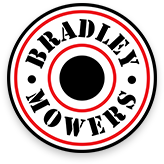Whenever you mow your lawn, the leftover clippings will spread all over your yard, which can get annoying. As a result, many people will attach grass catchers to their lawn mowers so they can stop the grass from flying around while they mow. Grass catchers have their pros and cons, so you should consider these points before you get one.
Pros
Tidier Lawn
If you don't use a grass catcher, then the clippings will get all over your lawn. This means that your lawn will have various clumps of grass throughout it, making it look uneven and unappealing. If you want to keep your lawn tidy without worrying about the clippings getting everywhere, then you should get a grass catcher.
This way, you can easily keep your lawn clear without going through the trouble of picking up the clippings on your own. This will also allow you to save some time.
Compost
You can use grass clippings as compost, which means that you can use it on your own land. If you use them fresh from your lawn on the area, then you can provide the dirt with some nutrients and help the grass on your lawn grow properly. This makes grass clippings a very solid option if you want your own compost.
You can also use the grass clippings to save money on compost. Since you can use the clippings for your compost, you won't need to buy as much.
Cons
Clipping Weight
As you mow your lawn, you will notice that the lawn mower feels heavier. This is because the clippings sit inside of the bag, adding weight to the entire lawn mower. This can then make it harder for you to mow the lawn since you need to push harder.
Some people may struggle with pushing a lawn mower while hauling clippings in the bag, so this could potentially slow down their entire lawn mowing process. Make sure that you consider this point if you think it might be an issue.
Emptying the Bag
Keep in mind that your bag will get full while you mow the lawn. When this happens, you need to remove the bag, carry it and empty the clippings into your garbage bin or onto your land. This adds another step into the mowing process, which will take more time and effort on your part.
You can always empty it after you finish mowing the lawn, but if you don't empty it often enough, then clippings will fall out of the bag. This can then cause you more problems during the process.
Conclusion
It's nice to have a grass catcher when you mow the lawn, but you should make sure that the pros outweigh the cons. Look over these points so you can get an idea of whether or not a grass catcher is the right piece of equipment for your needs.
